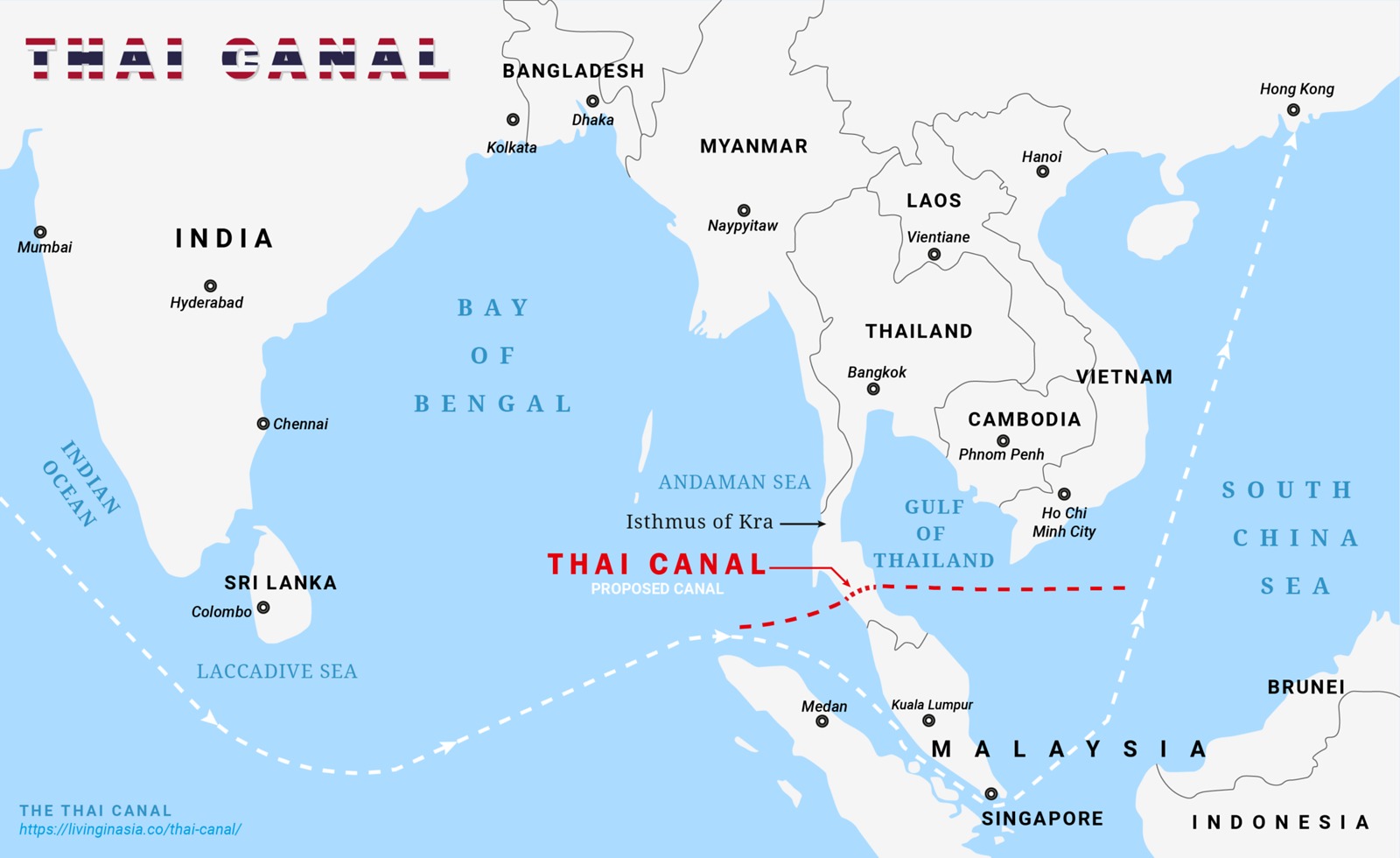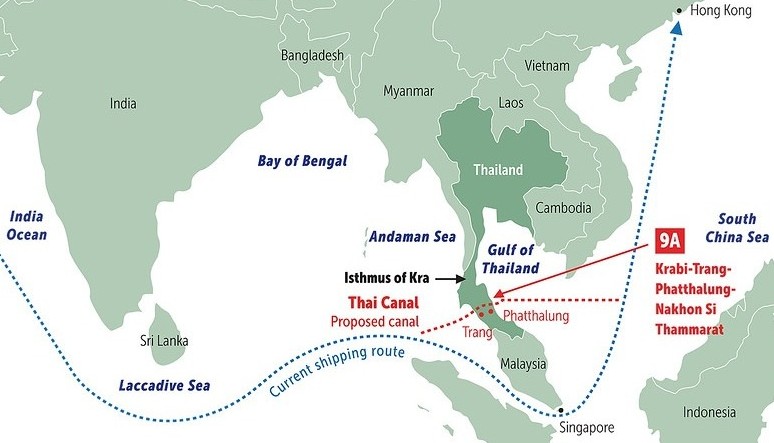The KRA Canal, sometimes known as the Thai Canal, is a proposed artificial waterway in southern Thailand that would link the Andaman Sea to the Gulf of Thailand. If completed, it would provide a different route to the highly congested Strait of Malacca, lowering transit times and shipping distances by 1,200 km. The Kra Canal project has been a subject of strategic consideration for a long time. The canal would be able to enhance Thailand’s economy by enhancing trade and opening up new business opportunities. But it also poses security issues, as it would be able to alter regional power balances, particularly between India and China.
China’s Interest and Benefit in the KRA Canal:
As two major players in the Indo-Pacific, the Kra Canal represents both an opportunity and a challenge in their strategic rivalry for India and China. Earlier China has expressed strong interest in the project under its Belt and Road Initiative (BRI). However, Thailand has announced an option for a $28 billion land bridge project, due to the political and environmental risks associated with the canal. As referred to in the term “Malacca Dilemma”, the canal would offer China an alternative to the trafficked Malacca Strait. Since 80% of China’s oil import passes through the region, control over the Kra Canal would enhance the uninterrupted supply of energy resources. The canal will accelerate trade and provide economic advantages by substantially reducing shipping distances for Chinese trade, which will decrease fuel expenses and improve logistics efficiency. By investing in the Kra Canal, China can deepen its economic and strategic partnerships with Thailand and strengthen its influence in Southeast Asia. The canal pays way for China’s Maritime Silk Road strategy, strengthening its regional dominance. An increased presence of the People Liberation Army Navy (PLAN) in the region could be a possible move from China. With greater control over regional trade, the canal would further integrate Thailand into China’s economic sphere of influence.

Thai Canal (a) KRA Canal
India’s Concerns: Why is the KRA Canal a Security Threat?
The KRA Canal in Thailand carries significant geopolitical weight for both India and China, potentially reshaping maritime routes between the Andaman Sea and the Gulf of Thailand. For India, the Kra Canal is seen as a double-edged sword. Activities by the PLA navy and closer proximity to Indian naval bases will be a security threat subjected to naval intelligence. India views China’s role in the KRA Canal as part of a larger “String of Pearls” strategy, through which Beijing develops maritime and infrastructure projects around India’s borders, including Sri Lanka’s Hambantota port and Pakistan’s Gwadar port. Furthermore, economic benefits from Indian ports such as Chennai and Visakhapatnam could be impacted if shipping lanes shift toward the KRA Canal. On the other side, if the project was successfully completed in the near future, India will utilize it with potential advantage due to ease of shipping lanes. Cutting down the maritime route for 1200 km will reflect in the duration of imports and exports by reducing nearly 2-3 days. It will promote sustainable maritime trading practices like less energy consumption and emission reduction.
India’s Countermeasures to the KRA Canal Threat
India continues to strengthen its Cooperation with ASEAN and QUAD Nations as a precautionary measure against China’s presence in the Kra Canal. India’s application of soft power with regional countries like Thailand, Vietnam, and Indonesia also helps counter Chinese dominance in Southeast Asia. Encouraging Indian business firms to invest in Thailand’s alternative logistics projects can further balance regional power dynamics. Expanding Naval Cooperation – Conducting joint military exercises with the US, Japan, and Australia (QUAD) to ensure regional stability. Supporting Thailand’s land bridge project will encourage Thailand’s shift toward the land bridge project instead of the Kra Canal, which would reduce China’s strategic advantage.
Conclusion: The Future of the KRA Canal Debate
The Kra Canal remains an unsolvable issue in the geopolitics of Southeast Asia. China sees the KRA Canal as a chance to boost its maritime influence, while India regards it as a security threat. The ongoing debate about the KRA Canal will keep the struggle for supremacy in the Indian Ocean central to India-China relations. Thailand’s focus on the land bridge project, rather than the canal, illustrates its worries about geopolitical risks. Should the KRA Canal come to fruition, it would play a significant role in intensifying strategic rivalry between India and China, fundamentally changing the power balance in the Indo-Pacific region.

